Interpreting “Overseas Chinese” Ceramics
Interpreting “Overseas Chinese” Ceramics Found on Historical Archaeology Sites: Manufacture, Marks, Classification, and Social Use
SHA Research Resource, March 2014
by Philip P. Choy
Historian and Architect, San Francisco, CA
Introduction
For decades in the excavation of mid-19th century historical sites, the recovery of material culture has given a voice to the Chinese pioneers of the American West. Archaeologists were amazed upon discovering the numerous Chinese settlements established in post-Gold Rush California and the North American West.
Recovery of cultural deposits has yielded food remains, medicinal vials, coins, gaming pieces, items of adornment, tobacco pipes, fragments of opium pipes and supporting paraphernalia, and an abundance of ceramic wares. Archeologists have classified these ceramics into the two categories: tablewares made of porcelain and porcelaneous stoneware; and storage vessels made of brown glazed stoneware.
Archaeologists have not studied Chinese-produced ceramics from historic sites with the same fine-grained contextual analysis and interpretation that is often given to European-produced ceramics recovered from the same period and even the same sites. This is largely due to the fact that North American historical archaeologists have not sought out Chinese ceramic experts or Chinese written sources, nor have they visited historical sites of pottery production in Southern China.
In this article, the author presents information on ceramics that are commonly found in nearly all sites associated with 19th century Chinese immigrants, drawing from his life experience, research, and travel to pottery producing regions and ceramic museums in South China, as well as personal interviews with ceramic experts in China.
Porcelain and Porcelaneous Stoneware Tablewares
The porcelain and porcelaneous tableware ceramics typically found at Overseas Chinese archaeology sites are known in China as min yao (folk ware). These common, everyday wares are distinct from the fine Chinese porcelain produced in the imperial kilns of Jingdezhen in Jiangxi Province for the emperor and his court, which are collected today by Asian art aficionados. Min yao ceramic dishes were used in China as well as in Overseas Chinese communities. None were produced specifically for export to Chinese communities living overseas.
The four patterns discussed here (Bamboo, Double Happiness, Winter Green, and Four Season Flower) represent the majority of Chinese-produced tablewares found at historic sites in North America. Both the Bamboo and Double Happiness bowls ceased to be imported by the beginning of the twentieth century. However, the Double Happiness motif continues to be used to this day on a wide range of tableware and decorative ceramics. The Winter Green and Four Season Flower dinnerware continued to be imported to the United States, along with new patterns, until World War II, when transportation across the Pacific was no longer possible. After 1949, shipments of Chinese goods were again interrupted with the United States embargo on the People’s Republic of China. Some porcelain manufacturers in Mainland China circumvented the embargo by shipping porcelain labeled as decorated in Hong Kong. These wares had designs completely different from those that came before.
Bamboo and Double Happiness Rice Bowls
In Chinese, all blue-and-white porcelain and porcelaneous stonewares are generically described as ching hua. The character ching denotes the blue and blue-green color of the wares. The character hua means “flower,” but it is also used to denote other design patterns.
Early North American archeologists attempted to identify ching hua bowls by analyzing their designs. Bamboo rice bowls have a blue-grey background color with a dominant motif composed of a field of bamboo, with blossoms and a rock alongside the bamboo (Figure 1). There are also two other design elements floating in open space on the opposite side of the bowl. Archaeologists speculated that these two elements represent a dragonfly and three circles, and therefore these bowls became known as “dragonfly and three circle” bowls. Others, referring to the three dominant elements (bamboo, blossoms, and rock), named it the “three friends” bowl. Another name, Swatow Ware, was applied supposedly to refer to the bowls’ place of origin. As described below, there is positive evidence that the bowls were made in the Gao Bi region, not Swatow. In the 1871-1883 inventory ledgers of the Kwong Tai Wo Company, a general store that operated in northern California during the last half of the 19th century, they are referenced as Bamboo bowls (Sando and Felton 1993).

Figure 1. Example of Bamboo rice bowl. Photo from author’s collection.
Other blue-and-white porcelain bowls were initially identified by archeologists as “swirls.” North American archaeologists without the knowledge of Chinese did not recognize the devolved “double happiness” characters intertwined within the vines. Originally, double happiness designs on ceramics were definite and recognizable subjects, painted to perfection. In contrast, in private kilns producing large quantities of min yao ceramics, artists had limited time to decorate each vessel. They took artistic license, devolving realism into abstraction (Figure 2).


Figure 2. Examples of vessels decorated with double happiness characters.
Left: fine-line decoration with vines and double happiness characters.
Right: Min yao (folk ware) Double Happiness rice bowl, with devolved characters and vines. Photos from author’s collection.
The practice of devolving designs from realistic depictions to abstracted figures was extremely common and is seen in many other designs, as in the example of children playing, another common decoration on folk ceramic dishes (Figure 3).


Figure 3. Sherds of three vessels, showing progressive devolution of the “Children at Play” design motif, from realistic (left) to stylized (middle) to abstract (right).
Photos from author’s collection.
Both Bamboo and Double Happiness rice bowls were manufactured in the eastern region of Guangdong, in Dabu County in the Mei Xian Prefecture (Maps 1, 2, and 3). In the surrounding hillsides are numerous kilns. 40 kilometers (24.8 miles) to the south of Dabu City is the town of Gao Bi (Gaopizhen). Surrounding Gao Bi are kilns in Zhou Rui, Ping Yuan, Guang De, Tao Yuen, and Tan Jiang. These kilns produce folk ceramics (min yao) for the common people. Sherds recovered from waster piles near these kilns are evidence that the kilns were in operation from the Sung Dynasty until recent times.
In the studio of Li Bing Yin, an expert on ceramics, I was shown an almost complete Bamboo rice bowl with the characters Gao Bi marked on the cavetto (Figure 4). These markings record the location where the specimen was found. This specimen is irrefutable evidence the Bamboo bowls are from the Gao Bi region.

Figure 4. Interior view of Bamboo bowl shown in Figure 1.
The characters to the left of the date read “Gao Bi.” Photo from author’s collection.
Kilns in the Gao Bi region are situated near the main channel of the Han River (Hanjiang), which flows to the city of Chao Zhou and then to the seaport port of Swatow (Shantou). The Bamboo bowls were exported from that seaport. From Swatow, the ceramics were shipped by sea to Canton (Guangzhou), Hong Kong, and ports in Southeast Asia.
Li Bing Yin also showed me a sample of a Double Happiness bowl still in saggars, recovered from a waster pile from a kiln site in the region (Figure 5).

Figure 5. Double Happiness bowl recovered by Li Bing Yin from a waster pile in the Gao Bi region. Photo from author’s collection.
Winter Green and Four Season Flower Ceramics
Jingdezhen in northeast Jiangxi Province is renowned as the porcelain capital of China, producing ceramics for the Imperial Court (Map 4). However, the profusion of kilns in the region also manufactured folk wares of cups, plates, bowls, etc. for use by common people. The Winter Green (Figure 6) and Four Season Flower (Figure 7) ceramics are from these Jingdezhen kilns. On display at the Jingdezhen Jiayang Ceramics Company, in an exhibit managed by Professor Huang Bin and teachers at the Jingdezhen (JDZ) Ceramics University, were examples of the Winter Green bowls and Four Season Flower plates.
Archaeologists named the Winter Green vessels, “celadon.” However, the term “celadon” refers specifically to the monochrome green Lung Chuan Yao porcelain produced in Lung Chuan County in Chekiang Province during the Sung Dynasty (960-1280 A.D). Celadon is different from the green ceramics of Jingdezhen. Among Chinese living in North America, the green Jingdezhen porcelain ceramics were referred to as Winter Green. Winter Green ceramics date back to the Sung Dynasty.

Figure 6. Winter Green cups displayed at the Jingdezhen Jiayang Ceramics Company.
Photo from author’s collection.
Similarly, the Four Season Flower ceramics produced in Jingdezhen are also listed as such in the merchant store inventories. The design pattern consists of clearly identifiable floral elements representing the four seasons: spring (peony), summer (lotus), fall (chrysanthemum), and winter (plum). The Four Season Flower pattern dates back to the Chia Ching (1796-1821) reign of the Ching Dynasty.

Figure 7. Four Season Flower plates displayed at the Jingdezhen Jiayang Ceramics Company.
Photo from author’s collection.
Unlike the Bamboo and Double Happiness patterns, which came only in bowls, both the Winter Green and Four Season Flower ceramics came in different sizes of bowls, plates, spoons and cups.
The terms “Winter Green” and “Four Season Flower” were used in merchant store inventories, documenting that these are the correct names of these pottery types. One example is the 1881 Kwong Tai Wo Inventory, held at the Bancroft Library, which is discussed in Sando and Felton’s (1993) chapter in the book Hidden Heritage. The same terms appear forty years later, in a merchant’s catalog in my own collection (Figure 8).
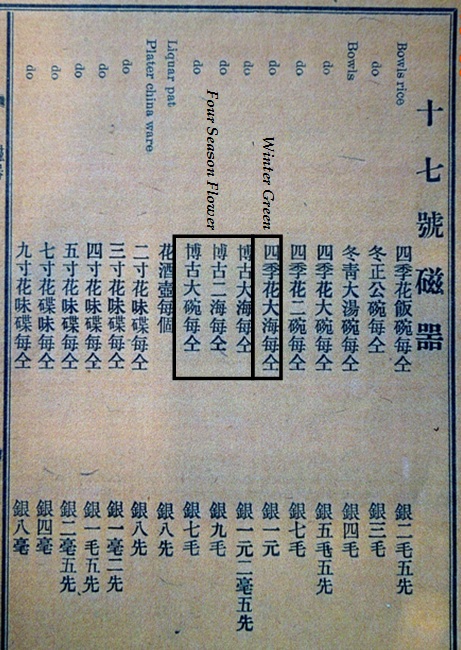
Figure 8. Merchant’s catalog, c. 1920s, author’s collection.
Reign Marks
Porcelains produced for the emperor in the government kilns of Jingdezhen were marked on the base with reign marks, identifying the name of the dynasty and the emperor. These marks are of two types, one executed in regular script, and the other written with archaic script in seal form, framed to form a square (Figure 9).
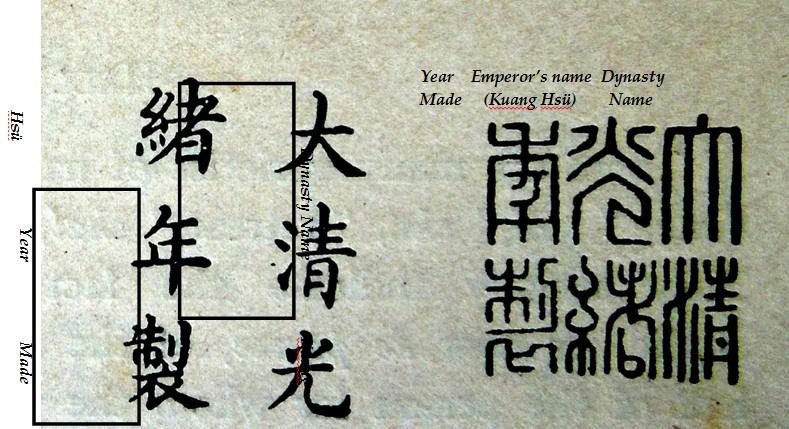
Figure 9. Reign marks for Kuang Hsü, 1875-1908, showing both regular script (left) and archaic script written in seal form (right). Photo from author’s collection.
The regular script is written in two columns with three characters each, reading top to bottom from right to left. The seal form is written in three columns with two characters each, and is also read top to bottom, starting on the right. In both types of mark, the first two characters are the name of the dynasty. The next two are the new name given to the emperor when he ascended the throne. The last two are literally translated, “year made,” meaning, “made during the reign of…”. Sometimes only four characters are used, in which case the name of the dynasty is omitted.
The porcelain and porcelaneous stoneware tableware dishes recovered from historic sites sometimes have reign marks that were applied by the kiln. Many of these consist of undefined patterns of strokes framed in a square that imitate the seal form used by the imperial kilns, but are so stylized as to be unreadable. As with the design motifs on porcelain ware, the original seal form used in imperial porcelain had devolved from legible to abstraction (Figure 10).


Figure 10. Reign marks found on pottery bases, indicating the reign of Emperor Chia Ching (1796-1821). The left mark is legibly written in archaic script, using the seal form. The right mark has devolved into an abstraction of the seal. Photos from author’s collection.
Abstracted seal marks are occasionally found on Winter Green ceramics excavated from Chinese American historic sites in North America. Some of these are illegible, but in others the abstracted strokes can still be identified to specific reign marks. I have seen two reign marks on Winter Green pottery in North American archaeological collections: Chia Ching (1796-1821) and Tung Chih (1862-1875). While the Tung Chih reign marks correspond to the historic period of Chinese immigration to North America, the Chia Ching reign marks might give the impression that Chinese living in North America were using antique bowls. However, kilns sometimes applied outdated reign marks on newly produced wares, in reverence to a previous emperor.
Tableware Ceramics and Food Practices of Chinese Immigrants
Archaeologists have held several misconceptions about food practices in Chinese American communities. There was no one pattern of food habits, but rather different patterns used under different conditions. In situations where only male workers were present, such as in work camps for mines and railroads, and in seasonal agricultural work, each worker had his own porcelain rice bowl. Sometimes these were distinguished by names or other marks pinpricked into the glaze with a sharp instrument. Workers’ meals were served out of common cooking utensils directly into these bowls. The luxury of a table setting was impractical.
In contrast, in family-type settings, food was served communal style. Family members sat around a round table and each person had an individual rice bowl (some children used a smaller bowl). The serving vessels were of different sizes and shapes to accommodate the different foods placed in the center of the table, reachable by everyone. There were no serving spoons. Each person helped him- or herself, picking the desired bite-sized food with chopsticks to accompany the bowl of rice. This can be seen in restaurants today.
In urban environments, especially after the 1882 Exclusion Act, male Chinese workers were often classified as partners in merchant businesses to facilitate and legitimize immigration. The business housed and fed the partners and/or employees, with one doubling as cook. Workers in my father’s store (1913-1952) ate their meals using Winter Green bowls. During my childhood we ate our family meals with Four Season Flower tablewares. I still have my small rice bowl.
Chinese Brown Glazed Stoneware (CBGS)
Today, most archaeologists call the ceramic storage vessels found on historic sites “Chinese Brown Glazed Stoneware” (CBGS) (Yang and Hellman 1998). Some archeologists, referring to art history books, initially identified CBGS with Jian You wares, which were also known as Temmoku. This is incorrect. Jian You refers specifically to the ceramics produced during the Southern Sung (960-1280) dynasty in the kilns of Shuiji near Jianyoung. The CBGS found in Chinese historical sites bears no relationship to the Jian You wares.
The CBGS found in Chinese historical sites were produced in the kilns such as the Nanfeng kiln in Shiwan, Guangdong Province (Figure 11; Maps 5 and 6). Shiwan was once a ceramic town of no less than ninety-nine kilns, but today only the Nanfeng kiln remains. The kiln was built in the reign of Zhengde (1426-1436) and operated for 500 years to the present day. It continues to produce glazed roof tiles and ridge ornaments; ceramic sculptures of humans, animals, and other figures; ceramic toys; and vases, teapots, flower pots, and other vessels with flambé glazes.

Figure 11. Nanfeng kiln in Shiwan, Guangdong Province. Photo from author’s collection.
In Chinese, the storage vessels produced in Shiwan are referred to simply as Black Glaze ware. These wares date from early 1400s and continued to be produced in large quantities until very recently. Different types of vessels were produced by individual guilds that specialized in producing specific items. For example, the Gong Tarp Guild produced large jars for water, huge jars for keeping goldfish, and sugar jars. The Nga Chang Guild and Jarn Deep Guild produced containers for wine and oil. The Hak You Guild also made wine bottles; the Shui Tow Guild and Shui Tour Guild, vessels for various sauces; and the Tarp Guild, small containers for fermented bean curd. The Ching Guild specialized in stoneware shipped to Southeast Asia and the United States. Black Glaze ware for storage and cooking are still being produced today using modern techniques.
Like the min yao tableware ceramics, there is no significant difference between stoneware vessels produced for use in China and those made for shipment overseas. The Ceramic Center Building in Foshan displays examples of Chinese Brown Glazed Stoneware from the Shiwan kilns. These date from the end of the Ching Dynasty (1644) to the beginning of the Republic (1912), and are identical to those found on historic sites in North America.
Barrel Jars
Stoneware storage jars were not produced solely for a single use, but for multiple uses. Large containers were made to be sold to shops, such as the large barrel jars commonly found in excavated Chinese historic sites in North America. They were used to ship food products overseas, and were reused for many purposes. Shops use them to hold food items such as rock sugar, thousand year old eggs and jah choy (preserved vegetables). In building the Central Pacific railroad, Chinese used them to carry tea. Chinese households in China and in the United States used them as rice bins. The barrel jars were also used to hold gun powder for the cannons used during the Opium War (Figure 12).


Figure 12. Barrel jars used to display food for sale in a store (left) and for gun powder storage (right). Photos from author’s collection.
Globular Jars
Globular jars were used for holding soy sauce, wine or vinegar (Figure 13). Canton (Guangzhou) in Guangdong Province was a major producer of soy sauce. Ingredients for making the soy sauce included soybeans, flour, salt, and water. The beans were boiled in huge woks, drained, mixed with flour, placed on trays, and allowed to mold in a room with controlled lighting and ventilation. The moldy beans were then placed in large stoneware barrel jars with a salt solution, and then placed in the sunning yard. The fermentation process took from two to six months until the first draws (the best quality) could be siphoned into the globular jars, ready for shipping (Figure 14).

Figure 13. Globular jars, with labels showing contents. The two jars resting on the floor contain vinegar. The two jars stacked above contain liquor. Photo from author’s collection.
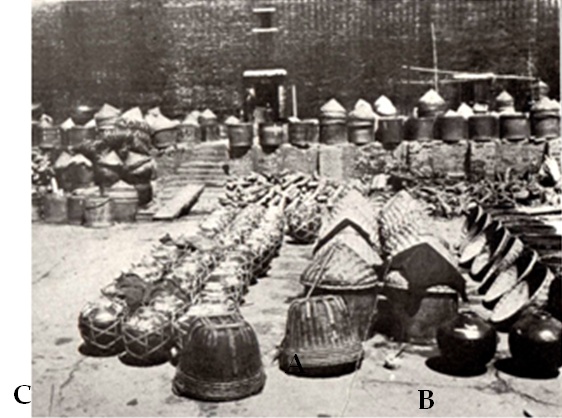
Figure 14. Photo of sunning yard for soy sauce fermentation. Barrel jars in the center (A) contain the moldy bean mixture undergoing fermentation. Globular jars in the lower right (B) are waiting to be filled with liquid siphoned from the barrel jars when fermentation is complete. The rows of globular jars on the left (C) have been filled with soy sauce, sealed, and wrapped in cordage for shipping. Photo from author’s collection.
Spouted and Wide Mouth Shouldered Jars
The wide mouth shouldered jars were produced for the variety of fermented soybean sauces, such as nom yue or fu yue. The shouldered jars with a spout were for liquor, soy sauce, vinegar, or oil (Figure 15).

Figure 15. Wide mouth shouldered jar (left) and spouted shouldered jar (right) on display at the Ceramic Center Building in Foshan. Photo from author’s collection.
Liquor Bottles
Stoneware liquor bottles containing ng ka py and mei kuei lu have been identified by archeologists as wine bottles (Figure 16). However, these Chinese distilled spirits were over 90 proof. For over three quarters of a century, the Wing Lee Wai company, established in 1875, was a dominant exportor of these liquors. The Wing Lee Wai company also opened offices in Hong Kong in 1925 (Figure 17). Bottles used by this company were produced by the Black Glazed Guild. The Wing Lee Wai company today is still in Hong Kong, but it is a shadow of its former self. Stoneware liquor bottles were commonly available up until the early 1960s; today the liquors are found in glass bottles.

Figure 16. Stoneware liquor bottle on display at the Ceramic Center Building in Foshan. Photo from author’s collection.

Figure 17. Wing Lee Wai company in Hong Kong. Photo from author’s collection.
About the Author
Retired architect and renowned historian of Chinese America, Philip P. Choy has worked with archaeologists to interpret Chinese-American sites and collections for over forty years. Currently, he is advising the Market Street Chinatown Archaeology Project and the Archaeology Network of the Chinese Railroad Workers of North America Project, among others.
Philip P. Choy co-taught the first college level course in Chinese American history at San Francisco State University. Since then he has created and consulted on numerous TV documentaries, exhibits, and publications. He served five terms as President of the Chinese Historical Society of America (CHSA) and is currently an emeritus CHSA board member. He has served on the California State Historic Resources Commission, on the San Francisco Landmark Advisor Board, and is a recipient of the prestigious San Francisco State University President’s Medal.
Philip P. Choy’s prior publications include A History of the Chinese in California (co-edited with Thomas Chinn and Him Mark Lai, Chinese Historical Society of America 1969); Coming Man: Nineteenth Century Perceptions of the Chinese (University of Washington Press, 1995), and San Francisco Chinatown: A Guide to its History and Architecture (City Lights Books, 2012).
Maps

Map 1. Provinces of China. Ceramics discussed in this paper were produced in Guangdong Province and Jianxi Province. Map courtesy of Wikimedia Commons.

Map 2. Location of Dabu County (A), Guangdong Province. Ceramics made in Dabu County were transported down the Hanjiang River to the market city Chaozhou and then the port of Shantou (Swatow), from whence they were shipped to Guangzhou (Canton), Hong Kong, and ports all over the world. See Map 3 for detail of Dabu County. Image courtesy of Google Maps. Map data © AutoNavi, Google, Kingway, ZENRIN.
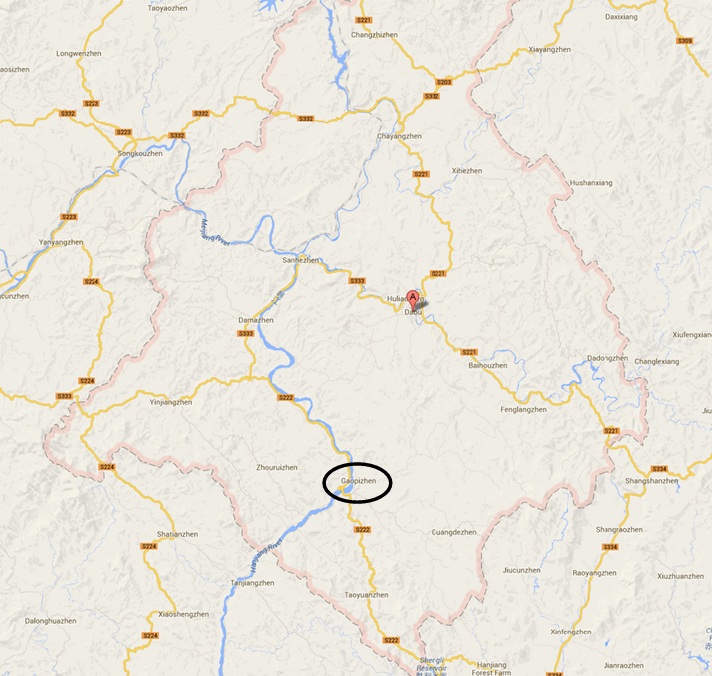
Map 3. Dabu County, showing county seat of Dabu (marked “A”) and the town of Gaobi (Gaopizhen) (circled) on the Hanjiang River. Image courtesy of Google Maps. Map data © AutoNavi.
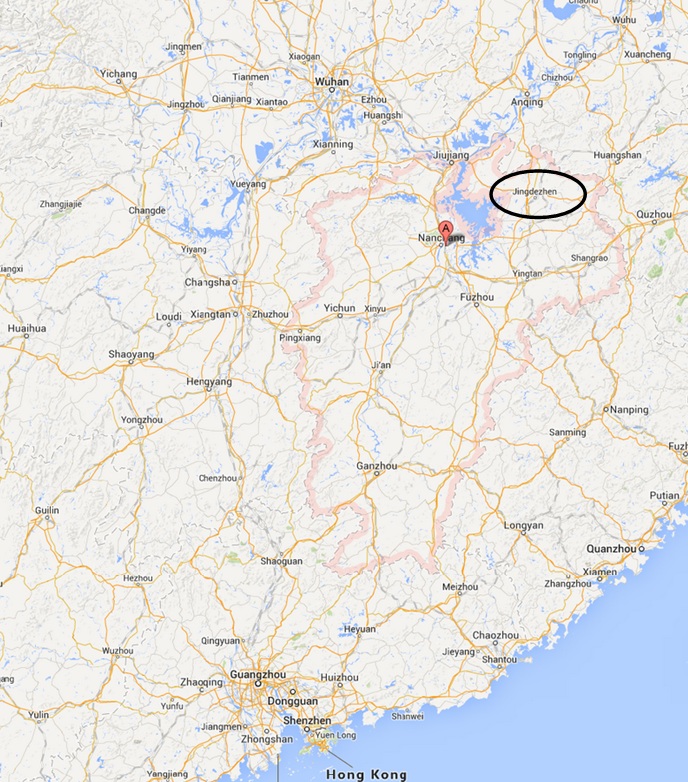
Map 4. Jiangxi Province, showing kiln town of Jingdezhen (circled). Image courtesy of Google Maps. Map data © AutoNavi, Google, Kingway, ZENRIN, SK planet.
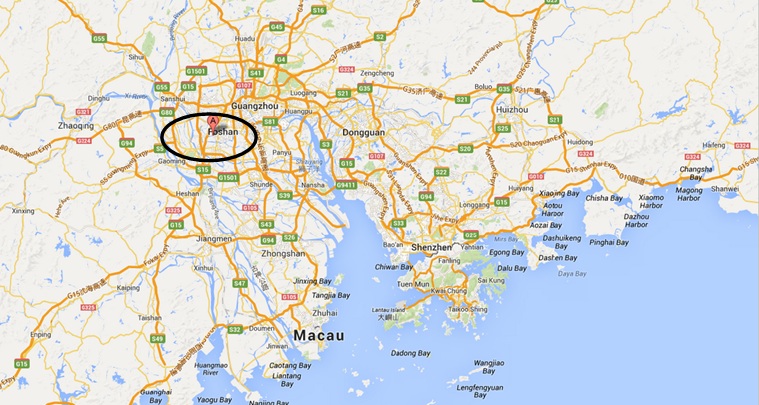
Map 5. Historic pottery kiln area in Foshan (A), Guangdong Province. See Map 6 for detail. Image courtesy of Google Maps. Map data © AutoNavi, Google, Kingway.
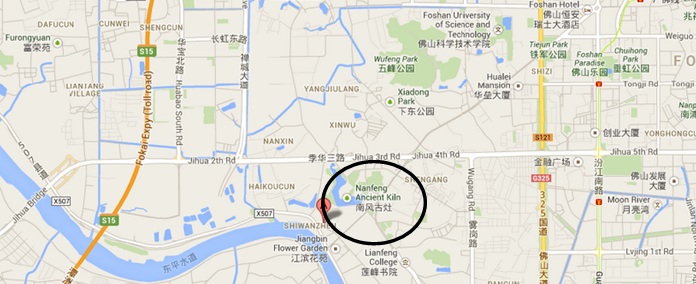
Map 6. Location of Nanfeng Ancient Kiln (circled), adjacent to Foshan University of Science and Technology. Image courtesy of Google Maps. Map data © AutoNavi, Google, Kingway.
Sources Cited
Sando, R. A. and D. L. Felton. 1993. Inventory Records of Ceramics and Opium from a Nineteenth Century Chinese Store in California. In Hidden Heritage: Historical Archaeology of the Overseas Chinese, edited by P. Wegars, pp. 151-176. Baywood Publishing Company, Inc., Amityville, NY.
Yang, J. K. and V. R. Hellmann. 1998. What’s in the Pot? An Emic Study of Chinese Brown Glazed Stoneware. Proceedings for the Society for California Archaeology (11):59-66.
A PDF Version of this Article is Available Here (PDF)
See Also: Chinese artifact collection at Southern Oregon Digital Archives



